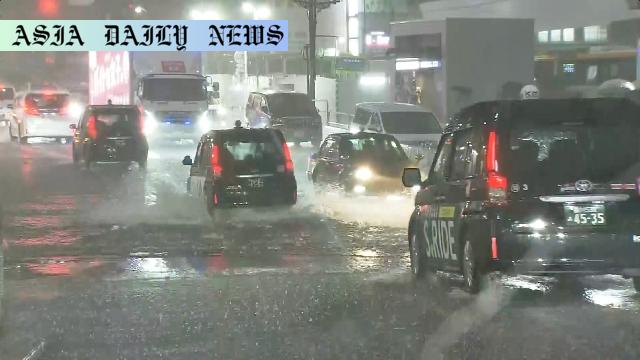Torrential Rain: Torrential downpours hit Tokyo and regions, flooding and landslides threaten vast areas.

Heavy Downpours Ravage Tokyo and Surrounding Regions
The Japan Meteorological Agency (JMA) has issued an urgent warning following a series of torrential downpours that pummeled Tokyo and several regions across Japan on Thursday evening. These areas include the densely populated Kanto-Koshin region, which encompasses Tokyo, the southern part of Tohoku in the northeast, and the Tokai region in central Japan. Unprecedented rainfall, analyzed to be in the range of 100 to 120 millimeters within a single hour, was recorded around Suginami, Shibuya, and Nakano wards in Tokyo, leaving many neighborhoods severely waterlogged.
Extreme Weather Conditions Exacerbate Disaster Risks
Japan is grappling with erratic and extreme weather conditions, with meteorologists highlighting the unusually unstable atmospheric circumstances. Late Thursday saw the rapid formation of bands of heavy rain clouds, creating a precarious situation in areas already overwhelmed by continuous and intense downpours. Such conditions significantly heighten the potential for rain-induced disasters, including flooding in low-lying areas and landslides in regions with saturated soil. Authorities remain on high alert, stressing caution and suitable measures for residents in vulnerable communities.
Residents Urged to Stay Vigilant Amid Critical Weather Alerts
Given the persistent severity of the weather conditions, the JMA has urged the public to remain vigilant and informed about the latest weather updates. Residents living in flood-prone or mountainous regions are advised to exercise extreme caution and adhere to evacuation orders when issued. Japan’s dedication to disaster preparedness has allowed authorities to deploy early-warning systems and emergency response plans effectively, but the record rainfall continues to put these measures to the test.
Potential Environmental and Infrastructural Impacts
With continuous downpours set to persist, analysts fear long-term repercussions on Japan’s infrastructure and environment. Impacts on transportation networks, such as delayed or halted rail and road services, are already evident in severely waterlogged areas. Additionally, the increase in landslides and urban flooding underline the challenges of urban planning amid an era of climate unpredictability. Efforts to mitigate future damage may include reassessing flood zones and refining early-warning systems.
The Road Ahead: Preparing for Future Challenges
As Japan continues to experience a rise in extreme weather events, a focus on sustainable urban planning and disaster response will be crucial. International collaboration to study and mitigate climate-related impacts can also play a vital role in creating more resilient infrastructure. While the immediate focus remains on recovery and safety, the situation highlights the pressing need for adopting climate-resilient strategies to safeguard lives and properties in the future.
Commentary
The Sobering Reality of Torrential Rain in Japan
The recent torrential rain in Tokyo and neighboring regions serves as a compelling reminder of the unpredictability and intensity of today’s weather patterns. Japan, a nation that has long been regarded as a global leader in disaster preparedness, finds itself consistently challenged by these extreme conditions. This event is not just about heavy rainfall—it’s a wake-up call for urban planners, policymakers, and environmentalists worldwide.
Urban Vulnerability Under Scrutiny
The affected areas, particularly Tokyo’s central wards, are among the most urbanized and densely populated regions of Japan. Yet, their vulnerability is strikingly evident in the face of such extreme weather. 100 to 120 millimeters of rain in just one hour presents a scenario that even the most advanced drainage systems would struggle to manage. As urban centers expand, integrating climate-resilient infrastructure becomes imperative to minimize potential damages and disruptions.
A Call for Climate Resilience and Action
This event also underscores the importance of addressing broader climate change issues. The frequent and intensified occurrences of such meteorological phenomena highlight the undeniable link between global warming and extreme weather. Japan, alongside other nations, must expedite efforts to incorporate climate solutions into national policies while fostering global cooperation in mitigating these challenges.
Empathy and Urgency
Finally, while discussing strategies and solutions, we must not lose sight of the human impact of these events. Families displaced, homes damaged, and lives disrupted serve as sobering reminders of the devastating realities on the ground. Authorities and communities must work in unison, not only to respond promptly to emergencies but also to build long-term frameworks for safer, sustainable living environments.


